 I first visited the Wissahickon Valley Park on February 2, 2003. It was about 40 degrees out, so we bundled up, hopped in Marisha’s Subaru (Maisy Dog in tow), and winded our way north through the city, passed the museum, up Lincoln Drive, and into the frozen woods. We parked near the central hub of the park, the Valley Green Inn, and began our hike. Knowledge of this park was revelatory as it dawned on me that I could bike up here any day I wanted to and hike or climb as much as I like. Never before had something been so simultaneously accessible and awesome. My relationship with the park started on February 2, 2003 and only blossomed with each passing year.
I first visited the Wissahickon Valley Park on February 2, 2003. It was about 40 degrees out, so we bundled up, hopped in Marisha’s Subaru (Maisy Dog in tow), and winded our way north through the city, passed the museum, up Lincoln Drive, and into the frozen woods. We parked near the central hub of the park, the Valley Green Inn, and began our hike. Knowledge of this park was revelatory as it dawned on me that I could bike up here any day I wanted to and hike or climb as much as I like. Never before had something been so simultaneously accessible and awesome. My relationship with the park started on February 2, 2003 and only blossomed with each passing year.
For ten years, I have biked or driven into the Wissahickon, usually with a camera. In this slice, I attempt to exhibit the important landmarks of the park along with my favorite nooks and crannies. From my observations, I find that many park visitors begin their visit at the Valley Green Inn. For clarity, this post is divided into two sections: North of Valley Green Inn, and South of Valley Green Inn. Many times throughout this post, I reference the Friends of the Wissahickon (FOW), a non-profit focused on preserving the natural beauty of the Wissahickon.
Located in Northwest Philadelphia, the 1,800 acres of Wissahickon Valley Park are part of Philadelphia’s 10,500-acre park system, one of the largest urban park systems in the world. A lovely, wooded valley with Wissahickon Creek running through its entire seven-mile length, the Park extends from Chestnut Hill in the north to Manayunk in the southwest. Forbidden Drive, a wide gravel road closed to automobile traffic, parallels the Creek and the Park is criss-crossed by more than 50 miles of often rugged trails. ~ FOW.org
Below is a photo of Marisha on February 2nd, 2003 – my first time in the Wissahickon.
Valley Green Inn
The Valley Green Inn is a great place to start any day in the Wissahickon. It is easily accessible by car or bicycle, has a concession stand (they sell park maps), a restaurant, public restrooms, and is near to a creek crossing, in case you’re looking to trail hike on the other side of the creek.
Of the several inns which once dotted the Wissahickon Valley, Valley Green is the only one still in operation. Located on Forbidden Drive in Fairmount Park, the Inn was built in 1850 on land owned by the Livezey family. The Livezeys sold the land on which it stood and 66 additional acres to the City of Philadelphia in 1872 as part of the Fairmount Park system. Fairmount Park leased the hotel to various managers until it was declared a ruin and scheduled for demolition in 1899. A group of local citizens rallied to its rescue raising the necessary funds to restore the building. In 1900, a group of prominent Philadelphia women took over its management and they changed the name to the Valley Green Inn, offering only light refreshments to park users.
The Friends of the Wissahickon has been responsible for the Inn since 1937 when a lease was obtained from the City. At the end of the 1980s, a new manager Bob Levy proposed another restoration and enlargement of the facility. Fundraising for this project began in earnest in 1996, and groundbreaking took place in 2002. Restored and enlarged, Valley Green now operates as a restaurant. ~ FOW.org
North of Valley Green Inn
Heading north from Valley Green Inn, Forbidden Drive follows the path of the Wissahickon Creek for about 2.6 miles. The first major site on this northern leg of the park is the Magargee Dam, built just upstream from where the Magargee Mill once stood. It was the last active mill on the Wissahickon. Most times of the year, you can hop from rock to rock, almost clear across the creek.
The PRO BONO PUBLICO fountain was built in 1854 for travelers on Forbidden Drive, formerly the Wissahickon Turnpike. Free-flowing, clean drinking water spouted from this fountain for 103 years, not quite living up to its inscription “PRO BONO PUBLICO, ESTO PERPETUA” which translates, “For the public good. Let it remain forever.”
In the depression of the 1930s, the Works Progress Administration (WPA) was a Federal program that gave work to the unemployed. Some of the shelters, guard boxes, comfort stations, walls, dams, and trails seen throughout the Wissahickon were constructed by over 4,000+ WPA workers. Rex avenue shelter is one of these WPA shelters. It served as a guard house.
Fifty yards up Rex Avenue–via a switchback up the hillside–is the path leading to the Indian statue. This kneeling Lenape warrior was sculpted in 1902 by John Massey Rhind. Commissioned by Mr. and Mrs. Charles W. Henry, it is a tribute to the Lenape Indians who hunted and fished in the Wissahickon prior to the arrival of colonists. The dramatic 15-foot high sculpture, which is mistakenly believed to depict Chief Tedyuscung, the most famous member of the Lenape tribe, can also be viewed from Forbidden Drive across the creek if one stands just north of the path to the Rex Avenue Bridge. The white marble statue was designed to commemorate the passing of the native Lenape from the region. For this reason, the Indian depicted in the statue has his hand to his brow looking west in the direction of the departing tribe. Rhind was not concerned with accurate representation since he gave this East Coast forest Indian a Western Plains Indian war bonnet. The statue, which was hauled to the site by workhorses, is situated on Council Rock, the place where the ancient Lenape Indians are believed to have held their pow-wows. ~ FOW.org
Just north of the Indian Statue is the Thomas Mill Road Bridge, the only remaining of five covered bridges that once occupied the Wissahickon. A nearby historical marker also states that, “it’s the only covered bridge in a major U.S. city.”
Whether you call it the Andorra Natural Area, Wissahickon Environmental Center, or The Tree House, these grounds have been maintained as a tree nursery since 1750 and now serves as an environmental educational center for young and old. Some of the activities include apple cider making in October, maple sugaring in February, the Tree House Tots program, and children’s summer programs. The nearby Cedars House Cafe is a lovely full service cafe, and a welcome relief for those who have just biked all the way from downtown Philadelphia!
South of Valley Green Inn
If you were to head south starting at Valley Green Inn, the first major site to stop at is Devil’s Pool. The Wissahiskon map states that, “According to legend, Devil’s Pool is said to have limitless depth. It is located near the junction of Cresheim and Wissahickon creeks.”
In 1987 the Fairmount Park Art Association commissioned “Fingerspan”, a sculpture by internationally renowned artist Jody Pinto which functions as a pedestrian bridge. When a span over the gorge south of Livezey Dam deteriorated, Fairmount Park retrofitted and installed a staircase from an old ship. To replace the stairs, the artist designed “Fingerspan”, an outgrowth of the Fairmount Park Art Association’s Form and Function project. The span was fabricated in sections and installed by helicopter. A grant from the Art in Public Places Program of the National Endowment for the Arts supplemented funds from the Fairmount Park Art Association, and the work was donated to the City of Philadelphia. ~FOW.org
Joseph Gorgas built this house of Wissahickon schist at the end of Kitchen’s Lane around 1750. Though it never served as a monastery, its name may be a result of the religious activity attributed to this area. When the Kitchen family occupied the house in the latter half of the 19th century, there were five cellars: one each for wine, milk, vinegar, potatoes and the “outside cellar.” These cellars may have been a stop on the Underground Railroad. ~ FOW.org
On what was most likely a very cold Christmas day in 1723, Baptists participated in a service at this very location. This act was designated by the Church of the Brethren as the birth of their sect. Today, the spot is marked by an easily missed plaque. I suggest visitors walk down to the edge of the water and try to imagine what it would have looked like on that cold Christmas day.
Toleration Statue. Erected in 1883, this marble statue of a man in Quaker clothing is situated on a ridge on the eastern side of the Park just north of the Walnut Lane Bridge. Standing atop Mom Rinker’s Rock, the nine-foot-eight-inch statue has the word “Toleration” carved into its four-foot-three-inch base. The statue, which was created by late 19th century sculptor Herman Kirn, was brought to the site by landowner John Welsh who is reported to have purchased the statue at the Centennial Exposition in Philadelphia. Welsh, a former Fairmount Park Commissioner and U.S. Ambassador to Great Britain, donated his land to the Park prior to his death in 1886. ~ FOW.org
Another of the Works Progress Administration’s structures, Ten Box Shelter was used as a guard station. Its name comes from the fact that it held the tenth box of an old phone line. Today, it is the threshold to the path leading to Rittenhouse Town.
RittenhouseTown is the site of the first paper mill in North America, built in 1690 by William Rittenhouse. For over 150 years, the Rittenhouse family operated the mills while living on the site. By the late 18th century, RittenhouseTown had developed into a small self-sufficient industrial community with more than 40 buildings: homesteads, workers’ cottages, the paper mill complex, a church, a school, and a firehouse. In the late 1870s, the Rittenhouse family sold the industrial site to the City of Philadelphia’s Fairmount Park. Today, only seven buildings still stand on the remaining 30 acres that were declared a National Historic Landmark District in 1992. ~ FOW.org
- Rittenhouse Town
- Rittenhouse Town
- Rittenhouse Town
- Rittenhouse Town
- Rittenhouse Town
- Rittenhouse Town
- Rittenhouse Town
- Rittenhouse Town
Lover’s Leap. According to the Wissahickon map, “Legend claims that the daughter of an indian chief and her lover plunged to their deaths from this dramatic cliff after she was promised to another man.” As far as I can tell, there is no marker for this spot. I simply used the trail map and my GPS device to come up with this, the only dramatic cliff I could find in this area.
Kelpius’ cave. German Pietist Johannes Kelpius believed, along with his followers, that the world would end in 1694. The group crossed the Atlantic and settled in the Wissahickon where they meditated on the banks of the Wissahickon and in Kelpius’ cave. Unfortunately for them, the rapture never came. I looked for this spot for nearly two years in the Wissahickon, and finally, with the help of a detailed map of the park, I found the ancient sanctuary in November of 2008 while visiting Philadelphia for a friend’s wedding.
Over the last ten years, I have taken many photos in the park. Here are a few that don’t fit into the categories above:
In one of my 2003 visits, I climbed down near the water to get shots of the fly-fishers. The Wissahickon Creek holds 30 species of fish including: American eel, carp, goldfish, shiner, dace, darter, bass, and sunfish. Also, the creek is stocked with trout in April of every year, but not enough of that population survives to breed.
Livezy Rock is probably the spot that I’ve visited the most in the Wissahickon. Rain or shine, this hunk of Wissahickon Schist is a primo spot for boldering-a form of rock climbing where the climber is typically free of gear and only a few feet off the ground as he/she parallels the ground. I would bike up here and spend hours crisscrossing the same spots over and over again until my fingers screamed. There are anchors for actual climbing, but I only bouldered on Livezy.
One thing you realize quickly while hiking along the Wissahickon is the unique glimmer reflected by the rocks in the path. This stone is called Wissahickon schist and is very abundant in the valley – many homes in the area are made of this stone. The dirt even glimmers with embedded pieces of schist.
Now Angela and I have introduced Marcel to the Wissahickon Park. I look forward to long hikes with him, going from site to site and looking for new treasures in one of my favorite spots on Earth. I’ll leave you with this: Edgar Allan Poe, who had at least seven addresses in Philadelphia, would probably have considered the Wissahickon his country home address. He frequented the park and said this about it, “The Wissahiccon is of so remarkable a loveliness that, were it flowing in England, it would be the theme of every bard, and the common topic of every tongue.” I implore you to read Poe’s The Elk or Morning on the Wissahickon below.
The Elk (or) Morning On The Wissahiccon by Edgar Allen Poe
The natural scenery of America has often been contrasted, in its general features as well as in detail, with the landscape of the Old World- more especially of Europe- and not deeper has been the enthusiasm, than wide the dissension, of the supporters of each region. The discussion is one not likely to be soon closed, for, although much has been said on both sides, a word more yet remains to be said.
The most conspicuous of the British tourists who have attempted a comparison, seem to regard our northern and eastern seaboard, comparatively speaking, as all of America, at least, as all of the United States, worthy consideration. They say little, because they have seen less, of the gorgeous interior scenery of some of our western and southern districts- of the vast valley of Louisiana, for example,- a realization of the wildest dreams of paradise. For the most part, these travelers content themselves with a hasty inspection of the natural lions of the land- the Hudson, Niagara, the Catskills, Harper’s Ferry, the lakes of New York, the Ohio, the prairies, and the Mississippi. These, indeed, are objects well worthy the contemplation even of him who has just clambered by the castellated Rhine, or roamed
By the blue rushing of the arrowy Rhone;but these are not all of which we can boast; and, indeed, I will be so hardy as to assert that there are innumerable quiet, obscure, and scarcely explored nooks, within the limits of the United States, that, by the true artist, or cultivated lover of the grand and beautiful amid the works of God, will be preferred to each and to all of the chronicled and better accredited scenes to which I have referred.
In fact, the real Edens of the land lie far away from the track of our own most deliberate tourists- how very far, then, beyond the reach of the foreigner, who, having made with his publisher at home arrangements for a certain amount of comment upon America, to be furnished in a stipulated period, can hope to fulfill his agreement in no other manner than by steaming it, memorandum- book in hand, through only the most beaten thoroughfares of the country!
I mentioned, just above, the valley of Louisiana. Of all extensive areas of natural loveliness, this is perhaps the most lovely. No fiction has approached it. The most gorgeous imagination might derive suggestions from its exuberant beauty. And beauty is, indeed, its sole character. It has little, or rather nothing, of the sublime. Gentle undulations of soil, interwreathed with fantastic crystallic streams, banked by flowery slopes, and backed by a forest vegetation, gigantic, glossy, multicoloured, sparkling with gay birds and burthened with perfume- these features make up, in the vale of Louisiana, the most voluptuous natural scenery upon earth.
But, even of this delicious region, the sweeter portions are reached only by the bypaths. Indeed, in America generally, the traveler who would behold the finest landscapes, must seek them not by the railroad, nor by the steamboat, not by the stage-coach, nor in his private carriage, not yet even on horseback- but on foot. He must walk, he must leap ravines, he must risk his neck among precipices, or he must leave unseen the truest, the richest, and most unspeakable glories of the land.
Now in the greater portion of Europe no such necessity exists. In England it exists not at all. The merest dandy of a tourist may there visit every nook worth visiting without detriment to his silk stockings; so thoroughly known are all points of interest, and so well-arranged are the means of attaining them. This consideration has never been allowed its due weight, in comparisons of the natural scenery of the Old and New Worlds. The entire loveliness of the former is collated with only the most noted, and with by no means the most eminent items in the general loveliness of the latter.
River scenery has, unquestionably, within itself, all the main elements of beauty, and, time out of mind, has been the favourite theme of the poet. But much of this fame is attributable to the predominance of travel in fluvial over that in mountainous districts. In the same way, large rivers, because usually highways, have, in all countries, absorbed an undue share of admiration. They are more observed, and, consequently, made more the subject of discourse, than less important, but often more interesting streams.
A singular exemplification of my remarks upon this head may be found in the Wissahiccon, a brook, (for more it can scarcely be called,) which empties itself into the Schuylkill, about six miles westward of Philadelphia. Now the Wissahiccon is of so remarkable a loveliness that, were it flowing in England, it would be the theme of every bard, and the common topic of every tongue, if, indeed, its banks were not parcelled off in lots, at an exorbitant price, as building-sites for the villas of the opulent. Yet it is only within a very few years that any one has more than heard of the Wissahiccon, while the broader and more navigable water into which it flows, has been long celebrated as one of the finest specimens of American river scenery. The Schuylkill, whose beauties have been much exaggerated, and whose banks, at least in the neighborhood of Philadelphia, are marshy like those of the Delaware, is not at all comparable, as an object of picturesque interest, with the more humble and less notorious rivulet of which we speak.
It was not until Fanny Kemble, in her droll book about the United States, pointed out to the Philadelphians the rare loveliness of a stream which lay at their own doors, that this loveliness was more than suspected by a few adventurous pedestrians of the vicinity. But, the “Journal” having opened all eyes, the Wissahiccon, to a certain extent, rolled at once into notoriety. I say “to a certain extent,” for, in fact, the true beauty of the stream lies far above the route of the Philadelphian picturesque-hunters, who rarely proceed farther than a mile or two above the mouth of the rivulet- for the very excellent reason that here the carriage-road stops. I would advise the adventurer who would behold its finest points to take the Ridge Road, running westwardly from the city, and, having reached the second lane beyond the sixth mile-stone, to follow this lane to its termination. He will thus strike the Wissahiccon, at one of its best reaches, and, in a skiff, or by clambering along its banks, he can go up or down the stream, as best suits his fancy, and in either direction will meet his reward.
I have already said, or should have said, that the brook is narrow. Its banks are generally, indeed almost universally, precipitous, and consist of high hills, clothed with noble shrubbery near the water, and crowned at a greater elevation, with some of the most magnificent forest trees of America, among which stands conspicuous the liriodendron tulipiferum. The immediate shores, however, are of granite, sharply defined or moss-covered, against which the pellucid water lolls in its gentle flow, as the blue waves of the Mediterranean upon the steps of her palaces of marble. Occasionally in front of the cliffs, extends a small definite plateau of richly herbaged land, affording the most picturesque position for a cottage and garden which the richest imagination could conceive. The windings of the stream are many and abrupt, as is usually the case where banks are precipitous, and thus the impression conveyed to the voyager’s eye, as he proceeds, is that of an endless succession of infinitely varied small lakes, or, more properly speaking, tarns. The Wissahiccon, however, should be visited, not like “fair Melrose,” by moonlight, or even in cloudy weather, but amid the brightest glare of a noonday sun; for the narrowness of the gorge through which it flows, the height of the hills on either hand, and the density of the foliage, conspire to produce a gloominess, if not an absolute dreariness of effect, which, unless relieved by a bright general light, detracts from the mere beauty of the scene.
Not long ago I visited the stream by the route described, and spent the better part of a sultry day in floating in a skiff upon its bosom. The heat gradually overcame me, and, resigning myself to the influence of the scenes and of the weather, and of the gentle moving current, I sank into a half slumber, during which my imagination reveled in visions of the Wissahiccon of ancient days- of the “good old days” when the Demon of the Engine was not, when picnics were undreamed of, when “water privileges” were neither bought nor sold, and when the red man trod alone, with the elk, upon the ridges that now towered above. And, while gradually these conceits took possession of my mind, the lazy brook had borne me, inch by inch, around one promontory and within full view of another that bounded the prospect at the distance of forty or fifty yards. It was a steep rocky cliff, abutting far into the stream, and presenting much more of the Salvator character than any portion of the shore hitherto passed. What I saw upon this cliff, although surely an object of very extraordinary nature, the place and season considered, at first neither startled nor amazed me- so thoroughly and appropriately did it chime in with the half-slumberous fancies that enwrapped me. I saw, or dreamed that I saw, standing upon the extreme verge of the precipice, with neck outstretched, with ears erect, and the whole attitude indicative of profound and melancholy inquisitiveness, one of the oldest and boldest of those identical elks which had been coupled with the red men of my vision.
I say that, for a few moments, this apparition neither startled nor amazed me. During this interval my whole soul was bound up in intense sympathy alone. I fancied the elk repining, not less than wondering, at the manifest alterations for the worse, wrought upon the brook and its vicinage, even within the last few years, by the stern hand of the utilitarian. But a slight movement of the animal’s head at once dispelled the dreaminess which invested me, and aroused me to a full sense of novelty of the adventure. I arose upon one knee within the skiff, and, while I hesitated whether to stop my career, or let myself float nearer to the object of my wonder, I heard the words “hist!” “hist!” ejaculated quickly but cautiously, from the shrubbery overhead. In an instant afterwards, a negro emerged from the thicket, putting aside the bushes with care, and treading stealthily. He bore in one hand a quantity of salt, and, holding it towards the elk, gently yet steadily approached. The noble animal, although a little fluttered, made no attempt at escape. The negro advanced; offered the salt; and spoke a few words of encouragement or conciliation. Presently, the elk bowed and stamped, and then lay quietly down and was secured with a halter.
Thus ended my romance of the elk. It was a pet of great age and very domestic habits, and belonged to an English family occupying a villa in the vicinity.
First published in 1844, in The Opal, p. 249.


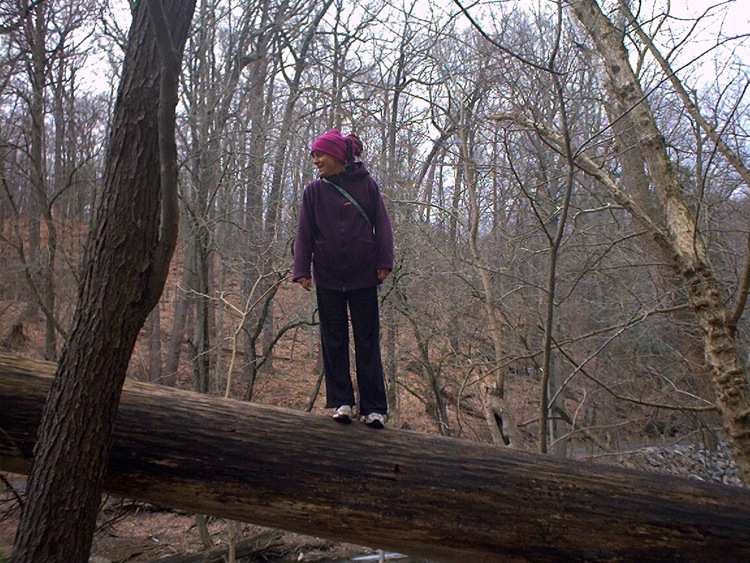



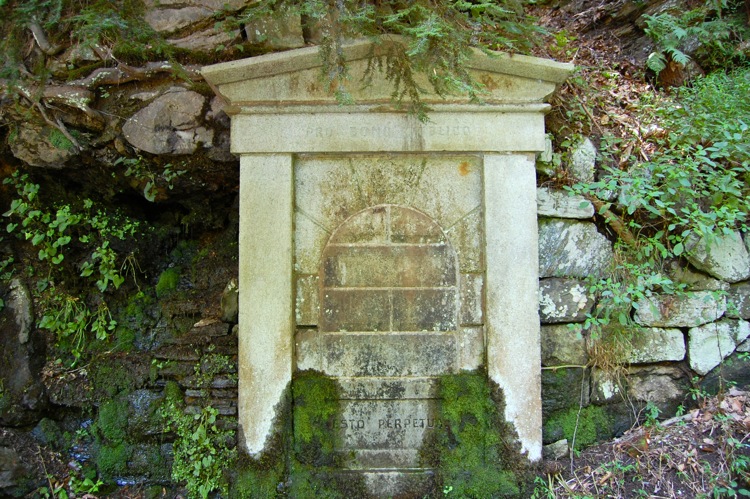


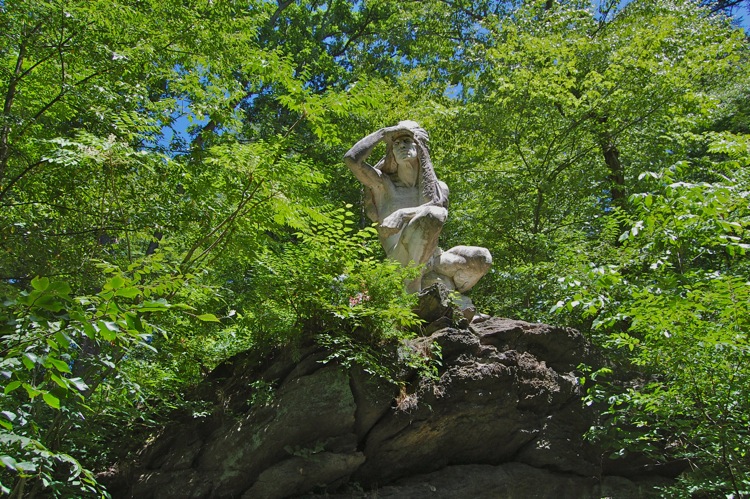

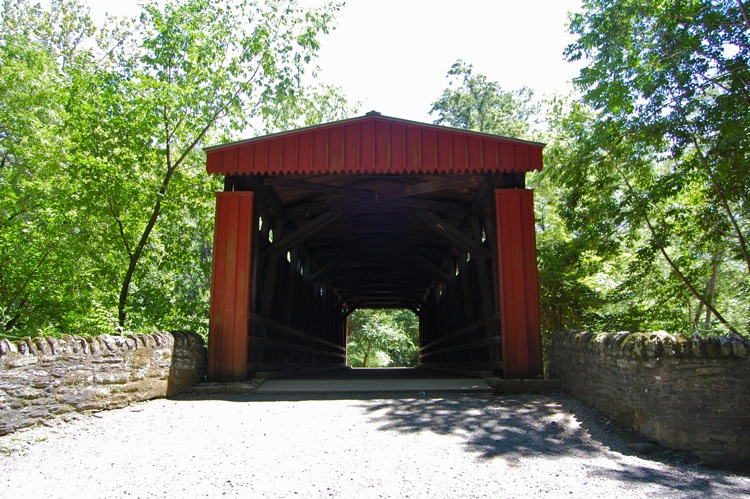
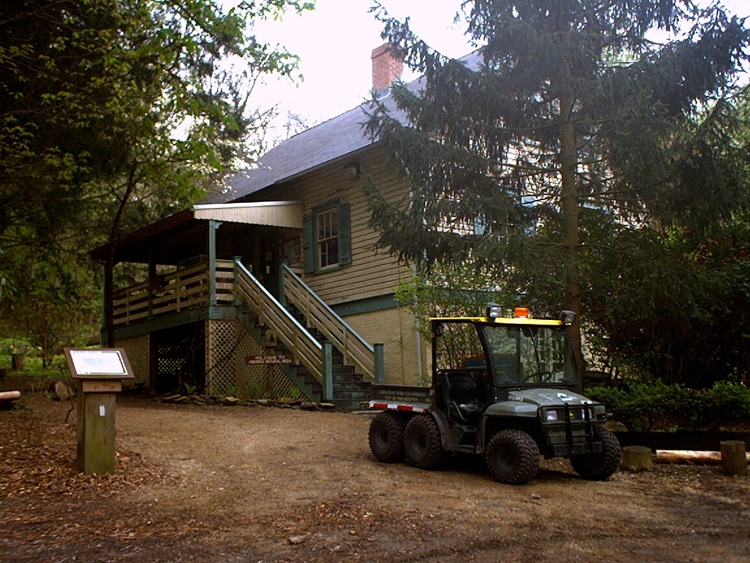
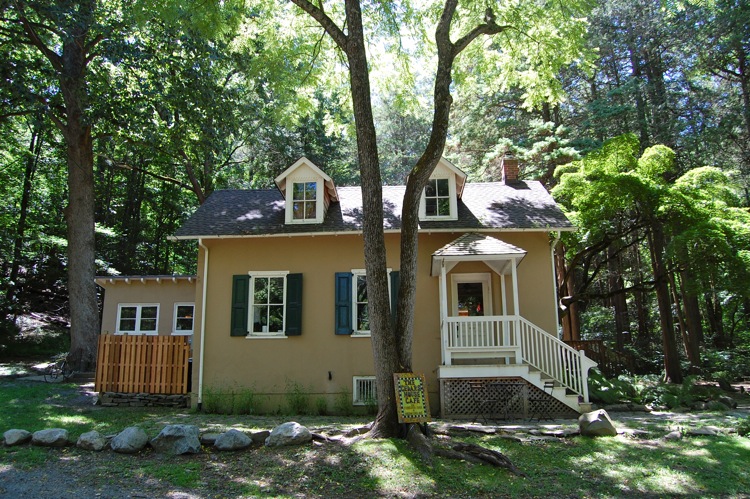
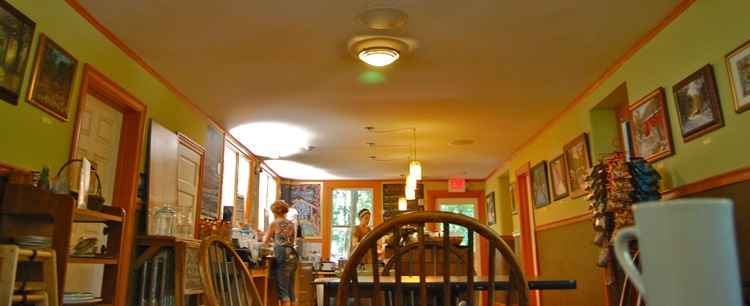
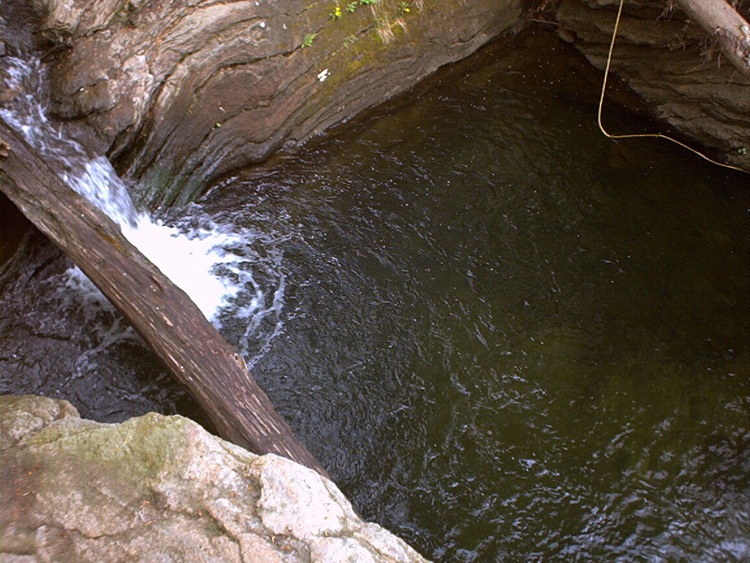


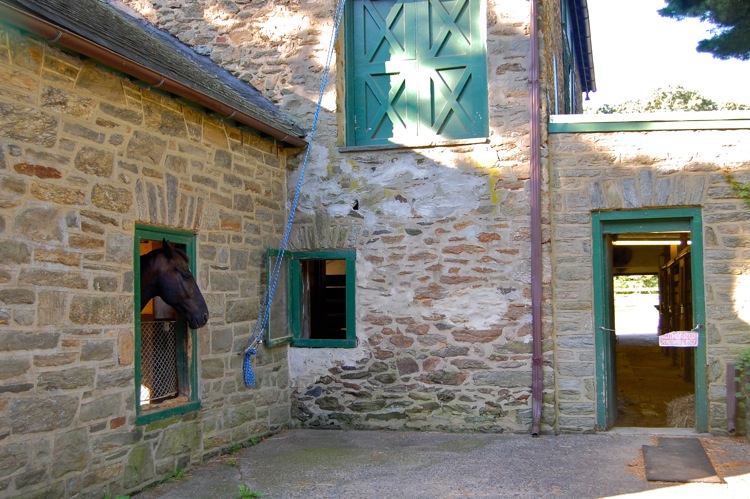


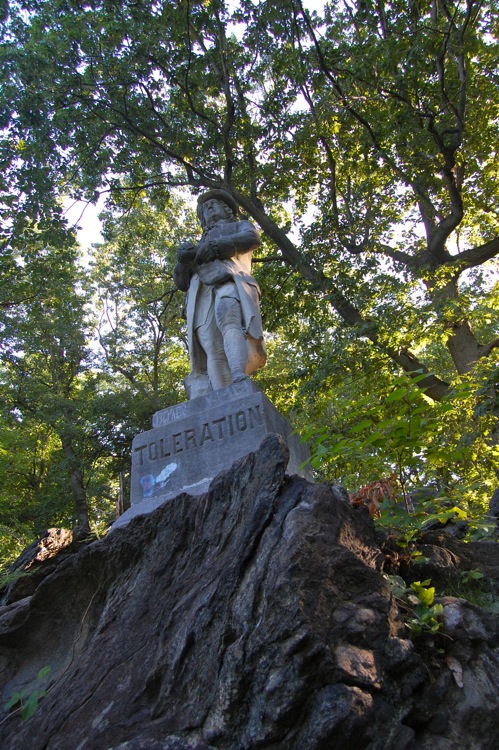


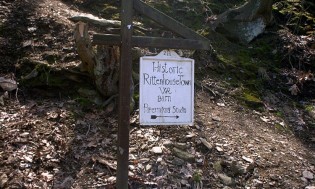

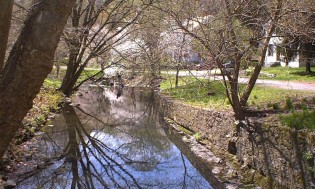
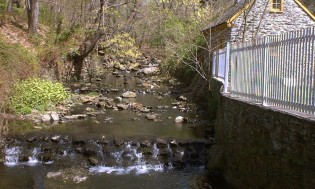






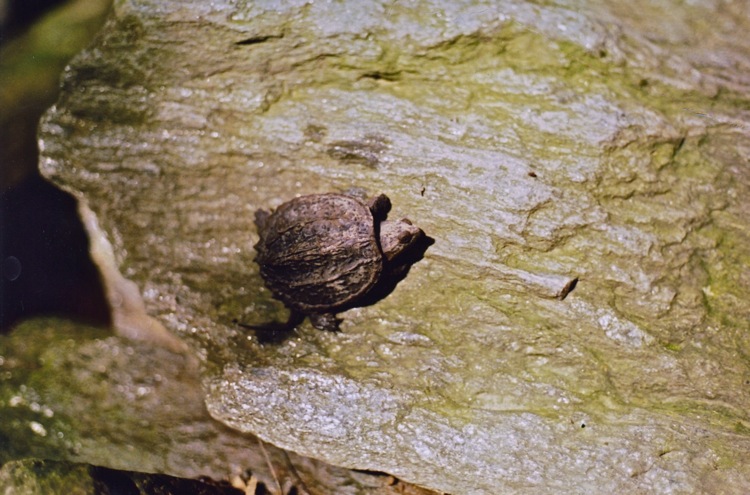




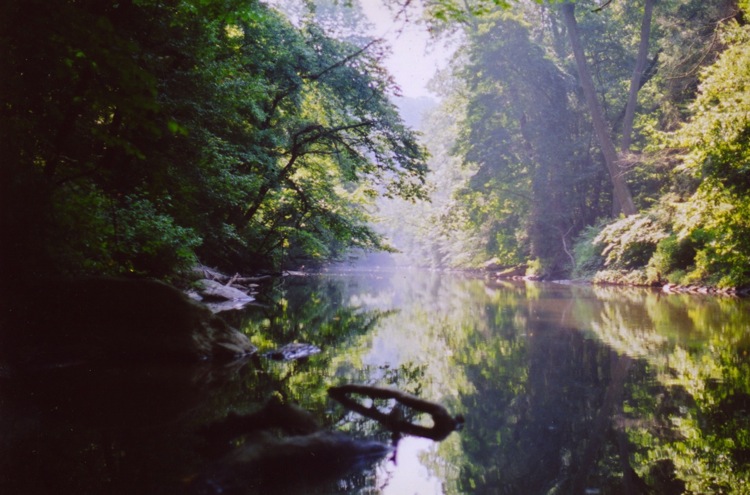


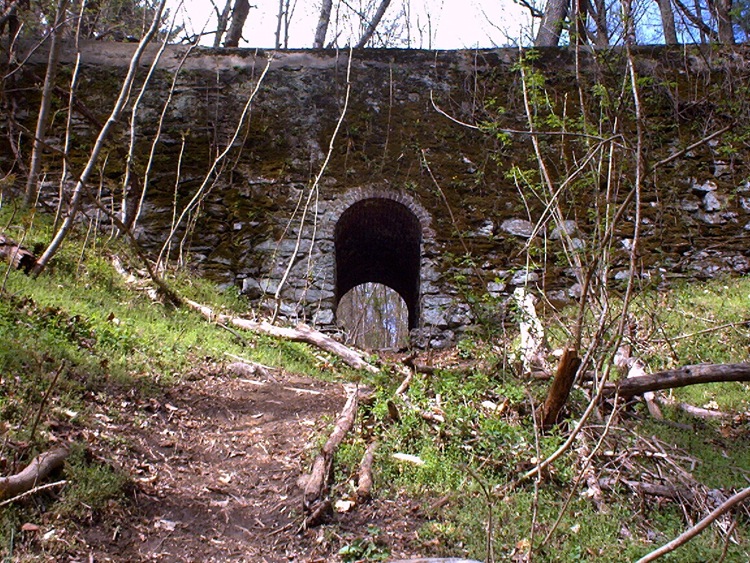

Thank you. Few people ever venture into the real Wissahickon but you have.
Thank you for the great article! I grew up not to far from there and spent my childhood going “back the crick” to explore. Each time was an adventure. My friends and I got to know the valley like the back of our hands. I didn’t live too far from the “Hundred Steps”, in fact a friend lived at the top of them (Lower Wissahickon, not too far from the falls at Ridge ave.),